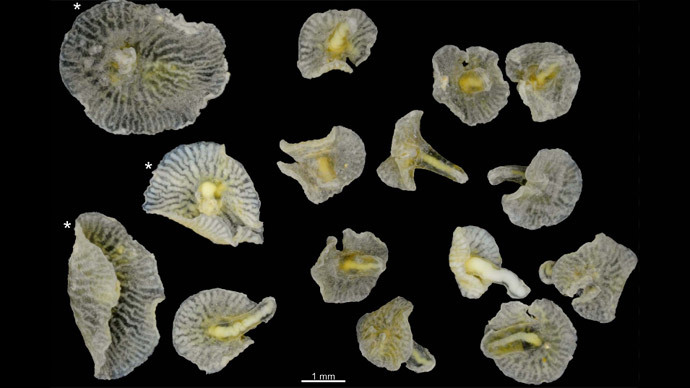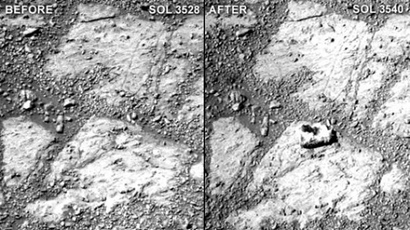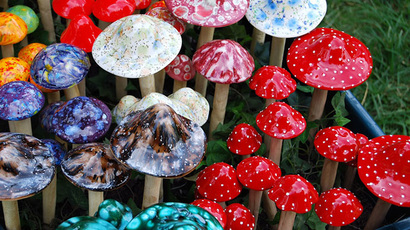Deep-sea mushroom creatures 'completely reshape' our understanding of evolution

Science has found an animal that could rewrite entire textbooks – it defies classification and could be related to creatures living half a billion years ago. For thirty years, the mushroom-shaped sea creature didn’t even have a name.
The animals were discovered off the Australian coast, deep underwater in 1986, but have only recently been given a name. The conclusions are published in the journal PLOS ONE – and there’s still no concrete classification for the translucent mushrooms with a strange, branched-out digestive system.
Expert opinions have since been pouring in on the Dendrogramma enigmatica, as the little fellow was christened.
"It's a very interesting surprise, and it poses lots and lots of questions," Simon Conway Morris of the University of Cambridge said in a comment on the University of Copenhagen research. Morris is a specialist in early animal evolution.
Leonid Moroz of the University of Florida’s Whitney Laboratory for Marine Bioscience told National Geographic that the newly discovered ‘mushrooms’ are related to some of the earliest animals ever discovered, and hence “completely reshape the tree of life, and even our understanding of how animals evolved, how neurosystems evolved, how different tissues evolved.”
He added that the find will probably “rewrite whole textbooks in zoology.”
This comes at a time when heated debate about early animal evolution is commonplace. These new creatures, however, are candidates for the title of one of the earliest known to man.
One thing is for sure: the find is proof of how miniscule our knowledge of our marine ecosystem still is, as well as the world in general. Recent discoveries in various areas back this view.
'Godzilla platypus' used to roam Australia waters, new fossil reveals
The reason the Dendrogramma were thought to be some underwater mushroom is the animal’s resemblance to the chanterelle mushroom. But instead of a normal stalk, the inch-long critter has a digestive tract. The lines branching out from its cap are presumed to be its numerous digestive chambers.
In all this time science has been unable to study the lifestyle of the creature properly. It doesn’t float in groups, nor does it attach itself to anything. What confused scientists further is that it’s also unable to swim. It doesn’t show any obvious signs of a system of locomotion either.
The only thing that is posited about its behavior is a theory on how it feeds. Judging from the mouth, it devours microbes by secreting certain fluids from passages in the ‘mouth’ and sucking them back up.
The scientist behind the discovery, biologist Jean Just, is amazed at how in 30 years no one has mentioned seeing anything similar.
"It's still amazing that no one has come back and said at least, 'I've seen things like this,' even if they haven't published it," he said.
The reason scientists believe the animal is among the most ancient ever is its lack of tissue, a loosely-celled composition and the lack of a nervous system. This resembles early, scarcely evolved animals called comb jellies, whose closest relative until now has been the sponge.
Some of the other animals in the comb jelly family include corals, jelly fish and sea anemones. The digestive tract of the animal is similar to theirs.
The Big Klekowskii: Yes, ancient penguins were the size of basketball players
The only thing, according to Moroz, that could counter the view that the Dendrogramma is an incredibly ancient creature, is the possibility of it turning out to be the larvae of another, larger, existing animal. But this isn’t discouraging the scientific community.
Besides, the only things even remotely similar to it have been extinct for more than 500 million years. The closest resemblance to this organism can be found in animal fossils dating back to the Cambrian explosion – an evolutionary event in the Ediacaran period, somewhere around 570 million years ago.
Unfortunately, the original 1986 samples have been preserved in such a way as to prevent proper DNA study – in formaldehyde.
That’s why the PLOS ONE journal team is encouraging scientists to look out for other specimens in a bid to discover more. The journal says the entire purpose of the published study is to publicize the finding.
But if, in fact, the Dendrogramma is a relative of something from the Ediacaran period, it is the closest a creature has ever looked to its extinct ancestors in the history of science.














